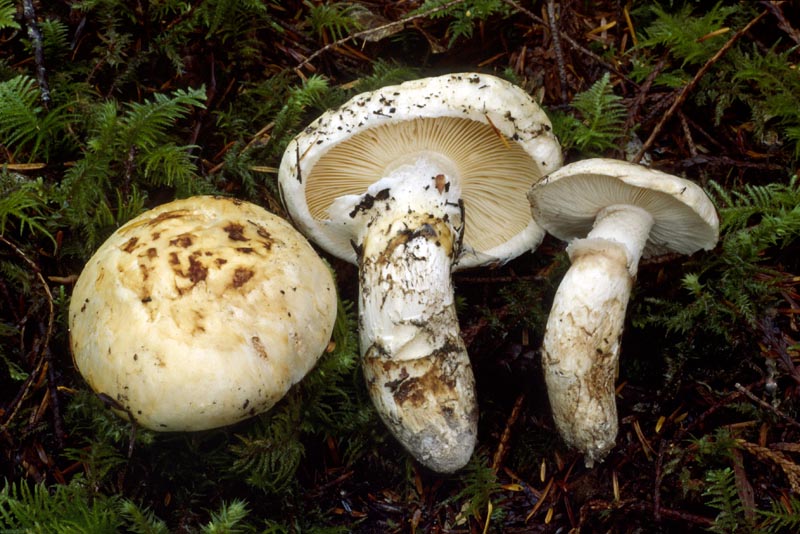When we think about mushrooms, we tend to think of these guys.

This is Fly Amanita (Amanita muscaria) also known as Fly Agaric. The classic mushroom with a red cap and white dots. Fly Amanita is a widespread mushroom throughout the northern hemisphere and, as you’re all wondering I am sure, is commonly associated with its intoxicating effects. Despite the fact that it has been used in many cultures for precisely these reasons, the intoxication brought on by Fly Amanita isn’t quite as predicable as those darling Psilocybin friends. Ingesting Fly Amanita may induce intoxicating effects, but will likely just make you very sick as well.
Though Fly Amanita is common, it’s not anything to be overly worried about. It’s a little toxic, as I said, but it announces itself like no other with such distinctive colouring. The poisonous mushroom of note for Vancouver Island, is the Death Cap (Amanita phalloides).
The Death Cap has a pale green to yellow-olive cap, white gills, a skirt-like veil on the upper stock, and a cup at the base of the stock (often underground). The Death Cap is native to Europe and northern Africa and grows as a symbiont with hardwood trees like oak and chestnut. This kind of symbiosis is ectomycorrhizal, meaning that the fungus grows on the roots of the host. First spotted in Mission BC in 1998, it is believed that the Death Cap came to BC as the fellow traveller of an imported decorative tree from Europe. Since 1998, sightings have increased in the lower mainland, with the first sightings in Vancouver in 2008, and on Vancouver Island shortly after that.
The Death Cap is one of the deadliest known mushrooms in the world. Its mortality rate sits at between 10% – 30% depending on access to care. This is so high in part because it takes up to 24 hours after ingestion for symptoms to appear, at which time the toxins have been fully absorbed by the consumer.
Be careful out there folks! The general rule with mushroom picking is eat nothing unless you are completely certain you know what it is. This is especially important around Death Caps as they can easily be mistaken for another popular and very delicious mushroom, the White Matsutake or Pine Mushroom (Tricholoma magnivelare) shown below.

Delving into the life of the Death Cap and other poisonous mushrooms that manage to get themselves to places they are not native to has revealed some questions I didn’t know I had about urban design, ecosystem management, and colonization. When we think of invasive species, we think of things like Scotch Broom, the European Green Crab, or Atlantic salmon escaped from fish farms. These all carry adverse affects on ecosystems that we can see, but can also insert themselves into niches that were disrupted by industrial activity. The spread of European trees as decorative trees in cities will aid the spread of the Death Cap. The ways in which cities are organized and impact the ecosystems they grow in is based on colonial models of urbanism and a kind of settler colonialism of plants and animals, not just people. Though this inquiry project does not have the space for the kind of investigation I would want to do on such questions, future posts will begin to look at them more closely.